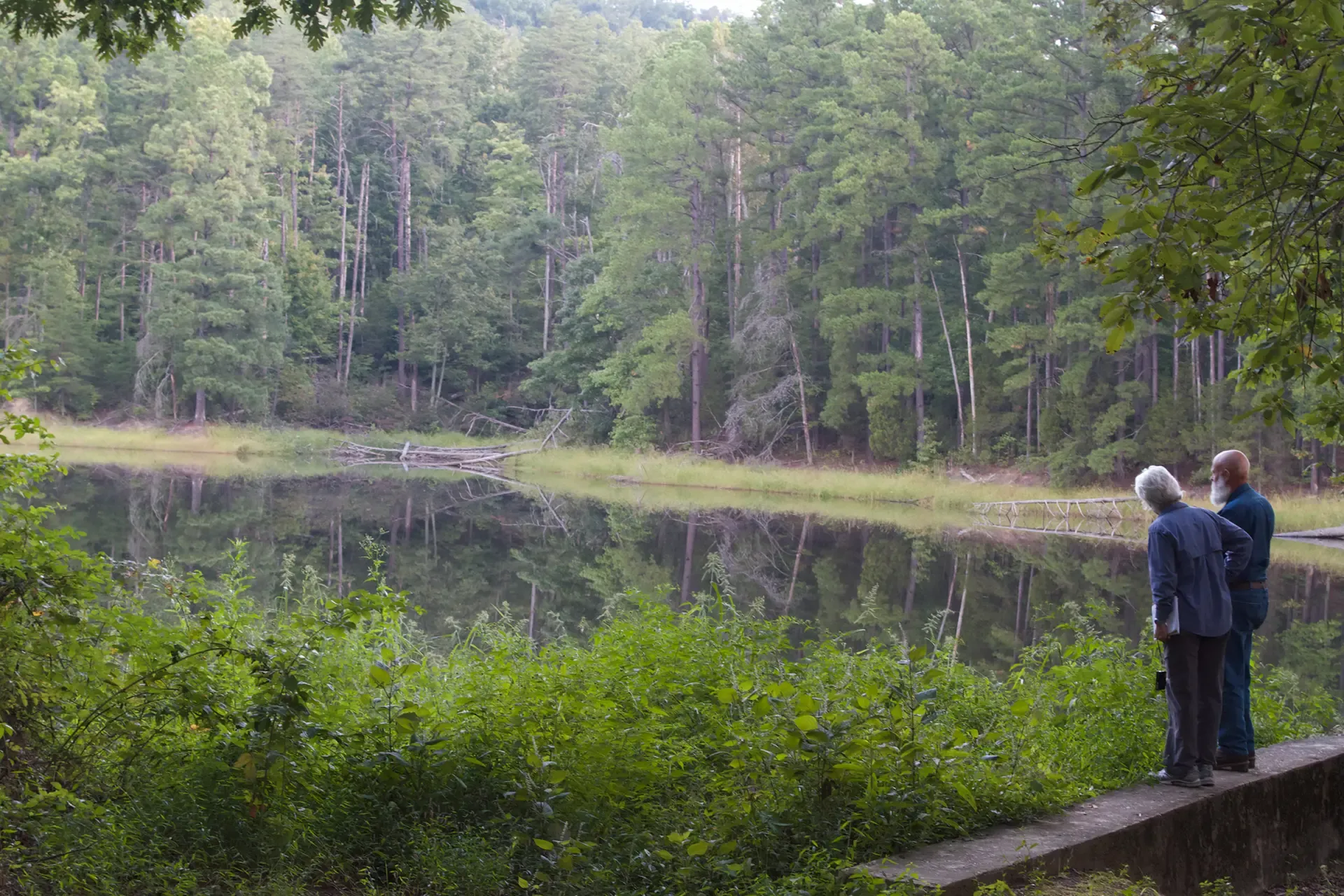Determining a True Carbon Benefit Part 2: Baselines

Recently we dove into the complex, yet critically important concept of additionality to a forest carbon project.
Ensuring additionality is essential to providing a credible and transparent climate benefit from our program.
Additionality asks, “Is the carbon generated from a forest carbon project because of the project or would it have happened absent the particular project or intervention?” If it would have happened, regardless of the project, then the carbon is not additional – it is coincidental. If, on the other hand, the carbon generated would not have happened but for the existence of the program, then the impact is indeed additional.
However, in a dynamic, complex system like forests, additionality is more than a yes or no question. What forest carbon projects must be able to do is to calculate how much of the carbon benefit is additional.
This is where a baseline comes in. Every forest carbon project has a methodology, or a process for measuring and calculating the carbon sequestered and stored specifically because of the project or intervention. In a technical sense, a baseline is the alternate scenario or counterfactual that is used as a starting point to calculate how much additional carbon is created.
In the words of the Taskforce on Scaling Voluntary Carbon Markets, baselines should be both “realistic and credible.”
The most common approach to a baseline is to create a model of how much carbon would be sequestered and stored on the land over the next 100 years absent the project. Modeled baselines are created using current and historical scientific data and a variety of assumptions based on that data.
The utility and accuracy of these modeled baselines is heavily dependent on the quality of the assumptions. Would a forest landowner harvest as much as is legally permissible without a forest carbon project? Would they harvest at the regional average? Would they harvest very little? These assumptions influence how low or high the baseline is set.
To find forest carbon projects that address additionality with a credible baseline, companies should look to partner with carbon projects that have approved methodologies through one of the widely accepted carbon standards, such as the Verified Carbon Standard, the Climate Action Reserve, the American Carbon Registry and others. These standards ensure a project uses a realistic baseline, providing companies who are comprehensively working towards their net-zero goals, with credible carbon credits.
However, just because there is a common and approved approach to creating a baseline, does not mean that there isn’t a need for innovation and improvement.
The American Forest Foundation (AFF), with our partner The Nature Conservancy (TNC), have been actively working to create a methodology with a new approach to setting a baseline for our Family Forest Carbon Program. Our goal is to provide the most credible and transparent climate benefit possible.
The Family Forest Carbon Program’s methodology takes a revolutionary step forward to advance the integrity of our carbon benefit, by using a real-time, observed baseline rather than a projected baseline. We will do this by measuring the carbon produced on a landowner’s property and comparing it to similar unenrolled properties.
Our approach is inspired by the methods used in medical trials. Take a group of forests that receive a ‘treatment’ – participation in the Family Forest Carbon Program and our specific forest practices – and compare it to a control group – unenrolled properties, or forests that do not receive the treatment. This allows us to isolate the Program as the single variable that contributed to the carbon generated, based on real, observed data.

Specifically, when a property is enrolled in the Family Forest Carbon Program, the property is ‘matched’ with a blend of similar properties via the Forest Service Forest Inventory and Analysis (FIA) data plots to set a baseline. For example, if it’s a property that has been unmanaged and has a certain stocking, it is matched to 10 properties with similar conditions. If it’s a landowner who is considered a ‘good steward’ and already managing, their property is matched with 10 similarly managed properties.
When it comes time to measure, we will look at the performance of the enrolled property after a conducted practice, compared to the performance of the same matched FIA properties. This allows us to exclude external factors, that will equally impact all properties, and to avoid the pitfalls of a ‘what if’ modeled projection.
Put another way, we are comparing Family Forest Carbon Program enrolled landowners to their peers who are not enrolled in the Program, during the same timeframe.
In doing this, the Family Forest Carbon Program is also addressing another critical component: intention. For properties that have a history of good management, landowners will likely intend to continue that management, whether they are in the Program or not. If those in the Family Forest Carbon Program and those with similar un-enrolled properties equally fulfill their intentions, no carbon benefit will be generated by those landowners within our Program. No credits will be sold. No companies will be able to make claims. This approach helps push the Program to design forest practices that produce true, additional carbon.
This new methodology is set to be approved by Verra’s Verified Carbon Standard this summer. While the methodology will be the foundation for the Family Forest Carbon Program, it will be available worldwide and could be applied in any country with a national forest inventory system once approved.
Stay tuned for the next piece in this series on creating a true carbon benefit that dives further into landowners goals, motivations and intentions.
Interested in learning more about the Family Forest Carbon Program? If you are a forest owner interested in the program, visit our landowner portal. If you are interested in verified carbon credits as part of your corporate climate strategy, please reach out to John Ringer, Director of Carbon Market Development at AFF.
Read AFF's next piece in this series on creating a true carbon benefit - From Intention to Action.
Related Articles

April 13, 2021
Determining a True Carbon Benefit Part 1: Additionality
Of all the concepts in the world of carbon credits, perhaps the most difficult to understand, yet critically important is ‘additionality.’ Ensuring carbon additionality is essential to ensure a company’s climate investment is making a true, positive difference. Christine Cadigan, Senior Director of the Family Forest Carbon Program, further explains the concept.

September 2, 2021
Determining a True Carbon Benefit Part 3: From Intention to Action
When measuring additionality many carbon projects ask, “Is the carbon generated from a forest carbon project because of the project or would it have happened absent the particular project or intervention?” While intention does play a role, it is often misinterpreted by those unfamiliar with the needs and behaviors of forest owners. Rather, to create a true carbon impact, a forest carbon project should factor intention into program design, yet measure real-life behavior.

December 18, 2025
Improving Wildlife Habitat with the Family Forest Carbon Program
For many landowners, spotting a fox, songbird, or other wildlife on their property is one of the highlights of spending time on their land. In this post we look at some examples of management practices you may see in your FFCP forest management plan and how they help create the ideal conditions for certain wildlife species.